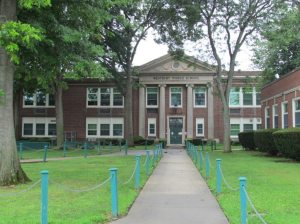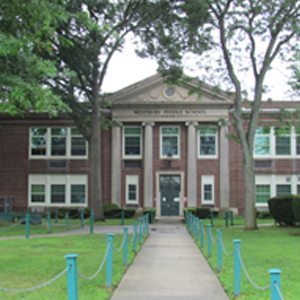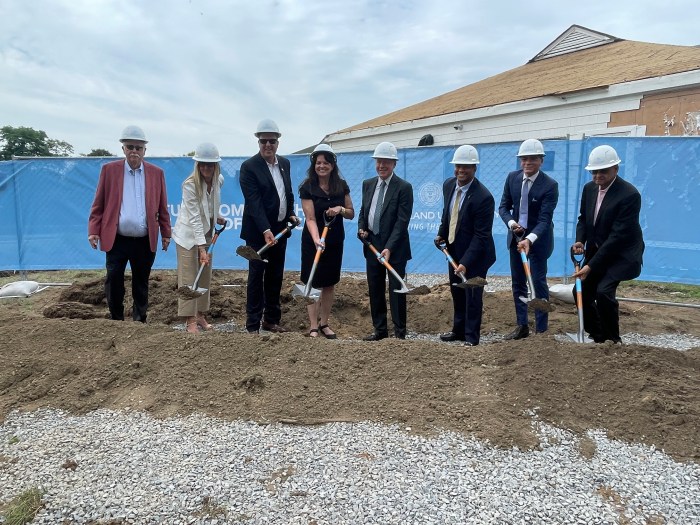At their Aug. 20 meeting, the Westbury School District Board of Education introduced a potential $172.6 million bond referendum, which if passed, would allow the district to do much needed facilities improvements and build a new middle school.
Superintendent of Schools Dr. Mary Lagnado opened the bond referendum presentation, suggesting that there was a tremendous need to improve the school buildings because of the age and physical condition of the facilities, as well as to keep up with the enrollment growth projections and subsequent space issues. There’s also a need for additional instructional support space, certain areas that need to be brought up to ADA compliance, and health and security upgrades that need to be made.
“With these kind of conditions, something has to be done,” Lagnado said. “With the enrollment growth, we need additional classrooms, bathrooms, expanded gymnasiums and cafeterias.”
Lagnado said that with added enrollment comes a need not only for additional classrooms, but more common areas, including cafeterias. She noted that the high school currently has four lunch periods, with the first one beginning at 9:45 a.m.

“We call it brunch, because it’s so early,” Lagnado said. “Our cafeteria can only hold 300 people, but having almost 1,400 students, we don’t have enough space. And we also have universal breakfast and we want every child who comes in to have a healthy breakfast but where do they eat it? There’s no room so they spill over into the gym and auditorium. That has become a problem.”
It’s an issue in the middle school as well, where kids spill into the gym and auditorium because of the undersized cafeteria. The elementary schools students don’t have a separate cafeteria either, eating their lunch in a room that doubles as both a cafeteria and gym.
Richard Wiedersum, of Wiedersum Associates Architects, the firm assigned on the project, presented building improvements the board was considering. One of the major upgrades included in the plan were separate gyms for all the schools and an expanded cafeteria in the high school.
Elementary schools are recommended to be at 90 percent utilization, however, Wiedersum said all the buildings are currently operating at 125 percent, with Dryden at 140 percent. Wiedersum said kindergarten through fifth grade enrollment is projected to increase between 600 to 700 students by 2023. That number is a culmination of the overcrowding that presently exists, as a result of the enrollment growth over the past few years, coupled with the anticipated enrollment growth within the next five to 10 years. In order to accommodate the students at the recommended 90 percent utilization level, Wiedersum proposed bringing the total number of classrooms in all the elementary school buildings to 32.
The firm is also recommending basic upgrades to the HVAC, boilers, roof and floor replacement, new pipes, masonry restoration and a new PA system, clocks and alarms, for all the schools.
While the middle school, which was built in 1924 and has had several additions since then, is currently operating within capacity, it is antiquated and not completely ADA compliant. According to Wiedersum, the cafeteria and auditorium are undersized and the hallways are very narrow, some coming in at 8 feet wide (with lockers). There are also several classrooms in the basement, but there’s no ADA access down there. Enrollment at the school is projected to increase by 274 students by 2023 and high school enrollment is projected to increase by 958 students by 2023.
The district is proposing a brand new three-story middle school, adjacent to the current building. The new building would have additional classrooms with access for students with physical disabilities, additional instructional and support spaces, an expanded cafeteria and gymnasium, additional ADA compliant bathrooms, wider hallways and additional lockers. Athletic fields would also be expanded.
“Consideration was also given to renovating the existing middle school, but it was decided that a completely new middle school would be most beneficial to students and more cost efficient and energy efficient,” said the district in a press release.
The scope of work included in a bond referendum would be $172,615,000. The district is currently eligible to receive 76.5 percent in New York State Building Aid on approximately 90 percent of the proposed work, which would significantly reduce the cost to the community. The district is also planning to apply for a Smart School Bond for approximately $3.4 million. Should a bond referendum be approved by the voters, the district would begin borrowing BANs (bond anticipation notes) in 2015-16 until 2019-20 when the district would switch to long-term serial bonds. Homeowners with an average assessed value of $323,133 would pay approximately $18.73 annually in 2015-16, $29.37 annually in 2016-17, $66.63 annually in 2017-18, $291.62 annually in 2018-19 and starting in 2019-20 through 2049, $298.14.
“We want to take advantage of the building aid. We’ve run out of space and we need these upgrades,” Lagnado said. “Our children deserve a quality education and we need this so that our children can be college and career ready.”
The Board of Education and administration will be planning several community meetings to discuss the proposed bond referendum and renovations to the facilities. If the plans are adopted, it would go up to public vote in November.



































